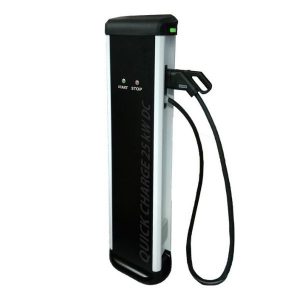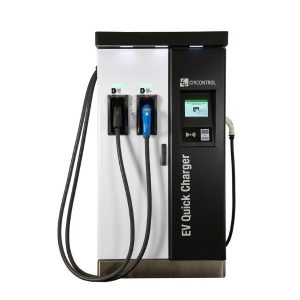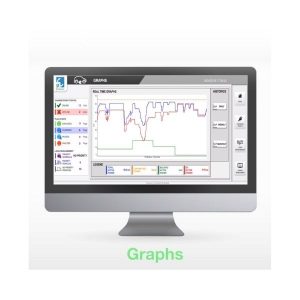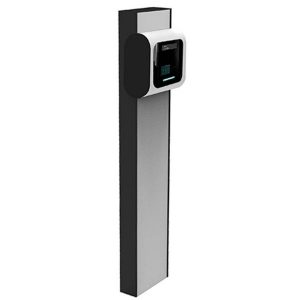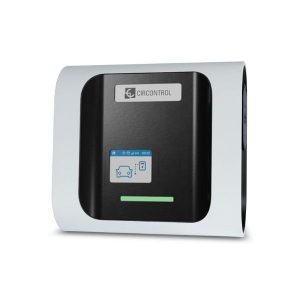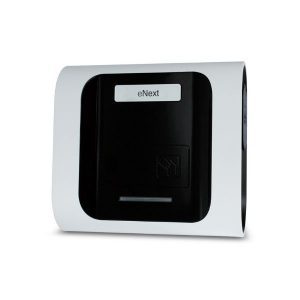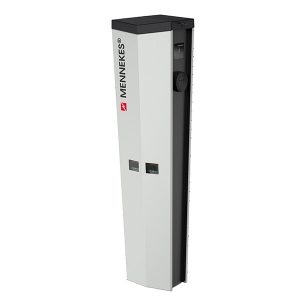The standardisation of public charging points for electric vehicles, is for sure a key passage for the spreading of this kind of vehicles and for the better optimizatin of the charging system: the electric user should be able to find anywhere a charging plug suitable to his needs.
Up to date, charging points have been standardised in several countries, including Italy.
A clear and defined legislation
- Normal power recharging points in alternating current (AC), which means for powers lower than 2 kW, must have the Mennekes – Type 2 plug (as described by the standard EN62196-2).
The geometry of the Type 2 plug and connector is the same for power ranging from 3,7 to 4,4 kW in AC, both single-phase and three-phase, the connector configuration in addition to power transfer allows the data communication towards the contacts “controlpilot” and “proximity”. - For the recharge point defined “High power”, which means bigger than 22 kW, are provided: the Alternating Current mode always with Type 2 connector; and Direct Current (DC) with a combined connector called “Combo 2” as described in the standard EN62196-3 or CHAdeMO.
Charging times depend on two factors
An electric car charging time depends on the power available in the charging station and from the “level” or battery charge status. For example, a car with 30 kW battery capacity discharged at 70%, with a charging capacity of 11 kW will take 2 hours to fully charge.
Free of charge charging stations and against payment
Today, a lot of charging stations for electric vehicles are free. However, in the market, there are already different solutions to manage the payment for the provision of the service: users can pay directly to banknote or debit card acceptors, or they can sign their own credit card and then pay with an App.
-
Charging station, Circontrol, Energy Mobility
Circontrol DC eSpeed Basic post
The DC eSpeed Basic post is a DC charging station which can be installed for private application, where quick charge of vehicles is a must (for instance: car rentals, dealerships, private companies…).
Product features:
• Three phase system with single direct current output (DC) with a maximum power of 25kW
• Wide voltage range delivered from 150V to 950V
• Available with CCS Combo or CHAdeMO connector
• Start/Stop buttons
• RGB LEDSKU: n/a -
Charging station, Circontrol, Energy Mobility
Circontrol DC Raption 50-150
Raption is a range of extremely powerful DC charging stations, designed for installations in both public and private locations where electric vehicles have to be charged as fast as possible (less than 30 minutes).
Raption DC is available in the following versions:
- Raption 50 – 50kW DC
- Raption 150 – 150kW DC
Common features:
- OCPP Protocol 1.6 J
- Modem/Ethernet port
- RFID authentication
- Connector configuration available between CCS-CHAdeMO-Type 2 (on request)
SKU: n/a -
Accessories, Circontrol, Energy Mobility
Circontrol DLM (Dynamic Load Management)
Dynamic Load Management (DLM) is a smart system devised by Circontrol for energy management of multiple charging stations that work at the same time, to avoid exceeding the available power.
DML features are:
- Restriction of the maximum power withdrawable from the grid
- Possibility to integrate OCPP
- All the stations charging status can be controlled via SCADA
- RFID authentication
- Building’s energy monitoring
SKU: n/a -
-
Circontrol, Energy Mobility, Wallbox
Circontrol wallbox eNext Elite S 7,4kW / T 22kW
Circontrol wallbox eNext Elite is a wallbox designed to be installed both inside and outside homes, condominiums, workplaces and public parking lots.
- Can be connected to a back-end system via ethernet, 3G/4G and Wi-Fi
- Highest level of protection thanks to integrated DC leakage detection and welding detection.
- RFID reader
- 3.5” color display
- OCPP 1.6J protocol
- Types available: eNext Elite S 7.4kW single-phase and eNext Elite T 22kW three-phase wallbox.
SKU: n/a -
Energy Mobility, Huawei, wallbox
Huawei Smart Charger: SCharger-7KS-S0 – SCharger-22KT-S0
The Huawei Smart Charger represents a very versatile solution for charging electric vehicles.
- 4 kW single-phase or 22 kW three-phase
- Type 2 socket
- Recharge mode 3
- Authentication methods: RFID, Bluetooth, App
- Communication: WiFi, Ethernet
- OCPP 1.6 and Modbus TCP protocols
- Available: SCharger-7KS-S0 / SCharger-22KT-S0
SKU: n/a -
Charging station, Energy Mobility, Mennekes
Mennekes AMEDIO Professional+
Mennekes AMEDIO Professional + is the charging station designed for the company, commercial, and hotel car parks, it guarantees an intelligent and sustainable charging infrastructure for car parks reserved for the company and customers.
- Security of investments thanks to state-of-the-art electronics
- Flexible counting options
- 2 x type 2 sockets with hinged lid for 22 kW respectively charging power and high operational safety
SKU: n/a -
Energy Mobility, Mennekes, Wallbox
Mennekes AMTRON Professional+
Mennekes AMTRON® Professional + has been designed for company and commercial vehicle fleets, hotels, restaurants etc … thanks to state-of-the-art technology and electronics, easy access to recharge and easy management by the facilities are guaranteed.
- Wallbox specially designed for industry and commerce
- Integrated modem for data transmission according to OCPP 1.6 j
- Flexible counting options
- Charging point with a maximum charging power of 22 kW
SKU: n/a -
Charging station, Energy Mobility, Mennekes
Mennekes: charging columns Basic – Smart
The charging columns and the Basic wall charging stations allow charging in mode 3 with type 2 socket </strong > Mennekes with shutter.
Both have a pleasant appearance and are manufactured with electro-galvanized sheet steel casings available in three color variants: black RAL 9005 (SW), silver RAL 9006 (SI) and Yellow RAL 1021 (GE). All are with degree of protection IP 44.
SKU: n/a






